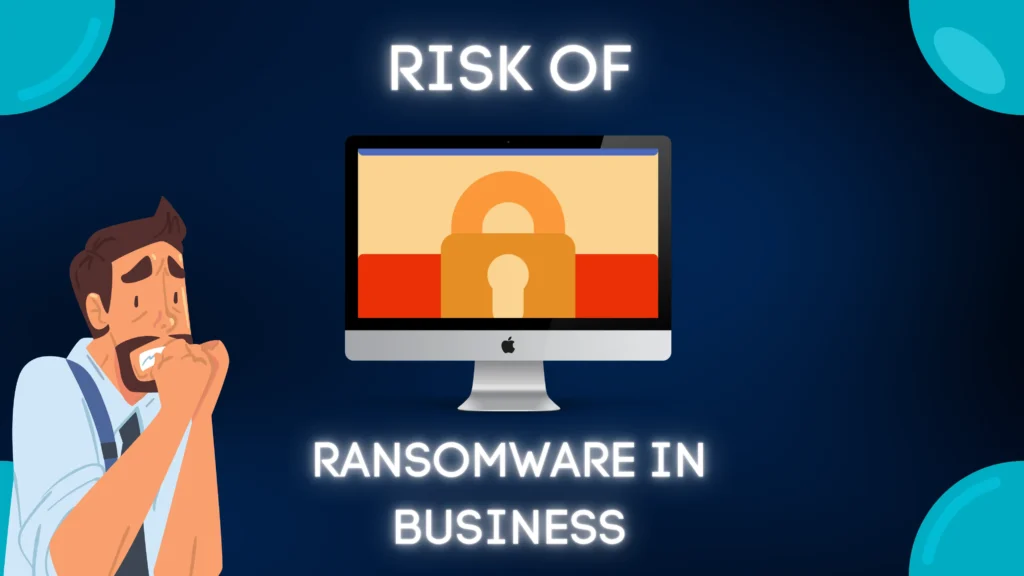Are you Looking for information on Exploring the Risks and Impact of Ransomware Attacks on Businesses? then you are on the correct article. It is a very serious and interesting topic to discuss. I am a cyber security expert and I have done some research on it. let’s clear your doubts through my article.
Introduction
These attacks have been on the rise in recent years, and they have become a significant threat to businesses of all sizes. Ransomware attacks can cause significant financial losses, disrupt operations, and damage a company’s reputation. In this article, we will explore the risks and impact of ransomware attacks on businesses, as well as ways to prevent and mitigate them.
What is Ransomware?
The ransom is usually demanded in the form of cryptocurrency, such as Bitcoin, and the attackers may threaten to delete the encrypted files if the ransom is not paid. Ransomware attacks can be targeted at individuals or businesses, and they can have a devastating impact on the victims. With the increasing sophistication of ransomware attacks, it’s important for businesses to understand the different types of ransomware and how they can protect their systems.
Ransomware attacks can be classified into two main categories:
Cryptoviral extortion: This is the most common type of ransomware and it encrypts the victim’s files and demands a ransom payment for the decryption key.
Screen lockers: This type of ransomware locks the victim’s computer screen and demands a ransom payment to unlock it.
There are also different types of ransomware based on their distribution methods:
• Phishing-based: The malware is distributed through phishing emails or malicious links
• Exploit-based: The malware is distributed by exploiting vulnerabilities in software
• Malvertising-based: The malware is distributed through malicious online ads
• Drive-by-download: The malware is distributed by visiting compromised websites
It’s important for businesses to understand the different types of ransomware and how they can protect their systems. This includes keeping software and systems up-to-date with the latest security patches, using antivirus and anti-malware software, and educating employees on how to identify phishing emails and avoid clicking on suspicious links or attachments.
How do Ransomware attacks happen?
Ransomware attacks typically happen through phishing emails or by exploiting vulnerabilities in software. The attackers will send an email with a malicious attachment or link, and when the victim clicks on it, the malware will be installed on their computer. The malware will then encrypt the victim’s files, making them inaccessible. However, the methods of distribution are becoming more sophisticated and attackers are using more advanced techniques to infiltrate systems. Some of these techniques include:
• Using Remote Desktop Protocol (RDP) to gain access to a network and install malware
• Using browser-based attacks to exploit vulnerabilities in browsers and browser extensions
• Using fileless malware that runs in memory and leaves no traces on the hard drive
It’s important for businesses to be aware of these advanced techniques and to have robust security measures in place to protect against them. This includes regularly updating software and systems, regularly monitoring network activity, and implementing two-factor authentication for remote access. Additionally, it’s crucial to have an incident response plan in place to quickly respond to a ransomware attack.
Impact of Ransomware attacks on businesses
The immediate impact is the inability to access important files and data, which can disrupt operations and lead to financial losses. Businesses may also be forced to pay the ransom, which can be a significant financial burden. In addition, ransomware attacks can damage a company’s reputation and lead to loss of customers. The effects of a ransomware attack can be long-lasting and can even lead to the failure of a business.
Some other impacts of ransomware attacks on businesses include:
• Loss of confidential information and intellectual property
• Business interruption and operational downtime
• Damage to IT infrastructure and equipment
• Legal and regulatory compliance issues
• Increased IT and cybersecurity costs
• Loss of productivity and revenue
The impact of a ransomware attack can also be felt by customers and partners of the affected business. This can lead to a loss of trust and credibility for the business, which can be difficult to regain.
It’s essential for businesses to understand the potential impact of ransomware attacks and take steps to protect themselves. This includes having robust security measures in place, regularly backing up important data, and having an incident response plan in place to quickly respond to a ransomware attack. Additionally, it’s important for businesses to have a comprehensive cybersecurity insurance policy in place to protect against the financial losses that can result from a ransomware attack.
Ransomware attack case studies
There have been numerous ransomware attacks on businesses in recent years, and they have affected companies of all sizes. A few notable examples include:
• In 2017, the WannaCry ransomware attack affected over 200,000 computers in 150 countries, causing significant disruption to businesses and healthcare organizations.
• In 2019, the Ryuk ransomware attack targeted U.S. newspapers, causing printing delays and financial losses.
• In 2020, the Maze ransomware attack targeted a number of companies, including the travel company Cognizant, resulting in the theft and public release of sensitive company data.
Preventing and mitigating Ransomware attacks
To prevent and mitigate ransomware attacks, businesses can take a number of steps, including:
• Educating employees about the risks of ransomware and how to identify phishing emails
• Implementing email filtering and blocking to prevent phishing emails from reaching employees’ inboxes
• Regularly backing up important data to a secure location
• Using antivirus and anti-malware software
• Developing incident response plans to quickly respond to ransomware attacks
Conclusion
Ransomware attacks are a significant threat to businesses, and they can cause significant financial losses, disrupt operations, and damage a company’s reputation. Businesses can take steps to prevent and mitigate ransomware attacks by educating employees, implementing security measures, and having incident response plans in place.
It’s important to be aware of the risks and take action to protect your business from ransomware attacks It’s important to note that ransomware attacks are becoming more sophisticated and targeted, and businesses should stay vigilant and continuously update their security measures to stay ahead of the attackers. Additionally, businesses should also consider purchasing cyber insurance to protect against financial losses in the event of a ransomware attack.
In conclusion, ransomware attacks are a serious threat to businesses of all sizes, and they can have a devastating impact on operations and finances. By understanding the risks and taking steps to prevent and mitigate attacks, businesses can protect themselves from the devastating effects of ransomware.


